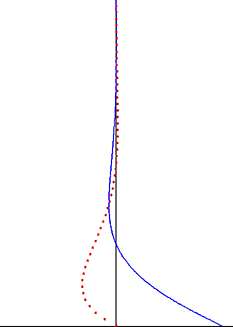
In fluid dynamics, Stokes problem also known as Stokes second problem or sometimes referred to as Stokes boundary layer or Oscillating boundary layer is a problem of determining the flow created by an oscillating solid surface, named after Sir George Stokes. This is considered one of the simplest unsteady problems that has an exact solution for the Navier–Stokes equations.[1][2] In turbulent flow, this is still named a Stokes boundary layer, but now one has to rely on experiments, numerical simulations or approximate methods in order to obtain useful information on the flow.
- ^ Wang, C. Y. (1991). "Exact solutions of the steady-state Navier-Stokes equations". Annual Review of Fluid Mechanics. 23: 159–177. Bibcode:1991AnRFM..23..159W. doi:10.1146/annurev.fl.23.010191.001111.
- ^ Landau & Lifshitz (1987), pp. 83–85.
© MMXXIII Rich X Search. We shall prevail. All rights reserved. Rich X Search
